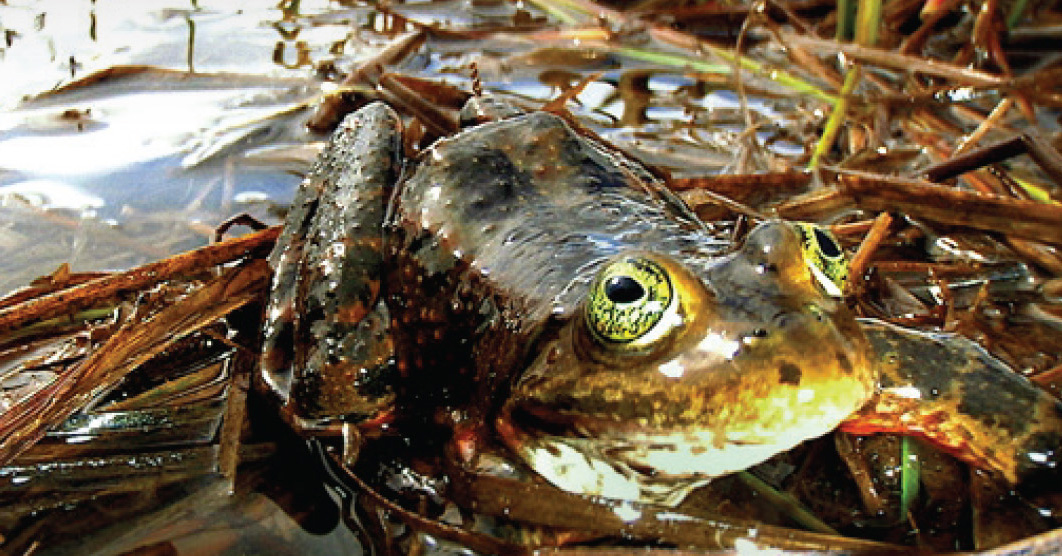BY MATT EVANS
The Oregon spotted frog (Rana pretiosa) will get it’s day in a Eugene federal District Court. This will follow, by about two years, the U.S. Fish & Wildlife Service’s listing of the amphibian as “threatened” under the Endangered Species Act and the recent filing of the lawsuits by WaterWatch of Oregon and the Center for Biological Diversity located in Arizona.
At stake is water usage in the Upper Deschutes River basin. The River winds through the high desert of Central Oregon, flowing from headwaters on the Eastern slope of the Cascade Range and finally empties into the Columbia River 252 miles later. Primary impacts of any restrictions on agricultural water usage would fall in Jefferson County, north of Central Oregon’s largest population areas of Bend and Redmond.
At the moment however, the largest impact of the lawsuits appears to be the tremendous uncertainty created. After a poor water year in the winter of 2014- 15, the snowpack this year looks very good, and is likely to result in local reservoirs reaching near capacity. Reservoirs filled by the Deschutes, including Crane Prairie (rebuilt 1940) and Wickiup (1949), could be forced to hold water during the irrigation season to benefit frog habitat. Both reservoirs were built by the US Bureau of Reclamation, along with the Fish & Wildlife Service a defendant in the lawsuits, with funds provided by all taxpayers, including farmers. A recent report in the Bend Bulletin noted that local farm equipment sales have plunged in Central Oregon, in large part due to this uncertainty.
Oregonians are no strangers to having their livelihoods snatched away in efforts to protect various plants, animals, and birds. Prior to the listing of the Northern Spotted Owl as “threatened,” the federal government oversaw annual Oregon timber sales on it’s lands of millions of board feet. This in turn allowed tens of thousands of high-paying jobs, particularly in the state’s rural areas, in felling trees, milling them into dimensional lumber and transporting the finished products. Ironically, many of these jobs did not even require so much as a high school diploma, whereas today’s society is lamenting the lack of jobs available to those without a college degree. In addition, many local communities also lost part of federal funds known as “PILT” (Payment In Lieu of Taxes) payments, agreed to when the former Oregon and California Railroad lands were deeded back to the federal government and on which property taxes are not levied. In most communities, these funds were used for road building, schools, law enforcement and other needs. Many Counties are still trying to recover from the reduction of these payments. Voters in Counties hard hit by job losses in the timber industry have been reluctant to tax themselves to replace the lost funds.
Central Oregon growers provide a diverse blend of crops and seeds that could be impacted. Of particular concern is the length of the growing season, which is stretched by the natural maturity of the various farm products and wise use practices of the local farm community. In jeopardy are such staples of Central Oregon agriculture as wheat and barley, but also the seed crops that follow their harvest, including Kentucky bluegrass and carrots. Reductions in water availability may force farmers to plant and harvest only one crop per year, potentially dramatically reducing their income or forcing them to consider a switch to higher value crops which may not be as well suited to the local climate.
For generations, American farmers squatted in the dooryard, scenting the air, perhaps hoping for rain or sun, but having little control over what Mother Nature provided. The building of the great irrigation dams and reservoirs gave some certainty to farmers, allowing even the desert to bloom and provide food and jobs across the nation and the world. This year, Central Oregon farmers will look not to the skies, but to a courtroom in Eugene to see if their fellow men have more regard for them than the whims of Mother Nature.



